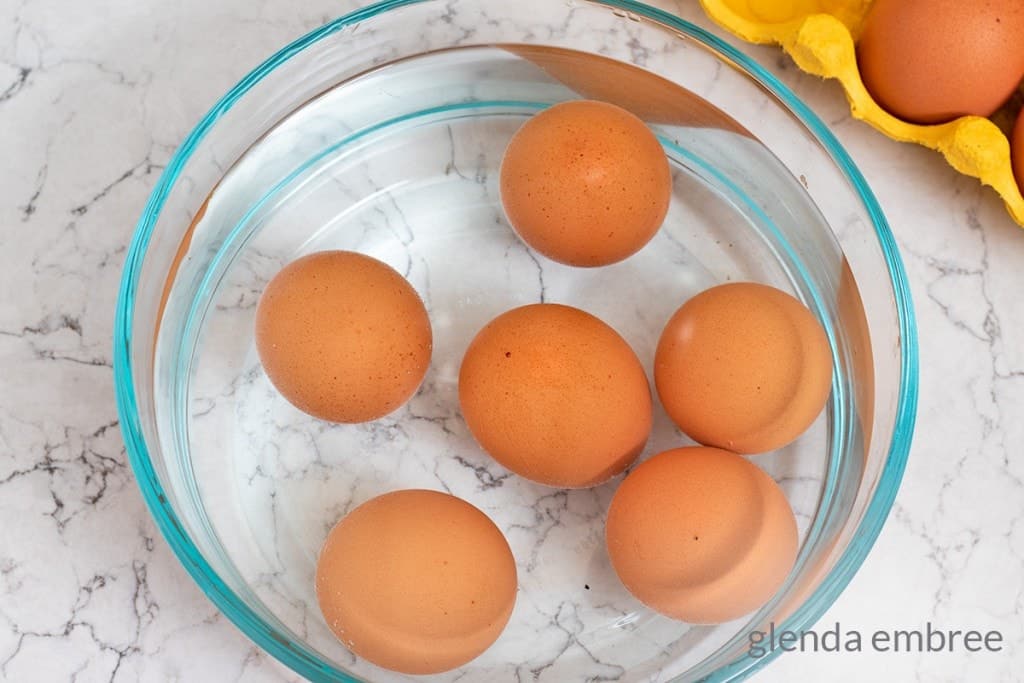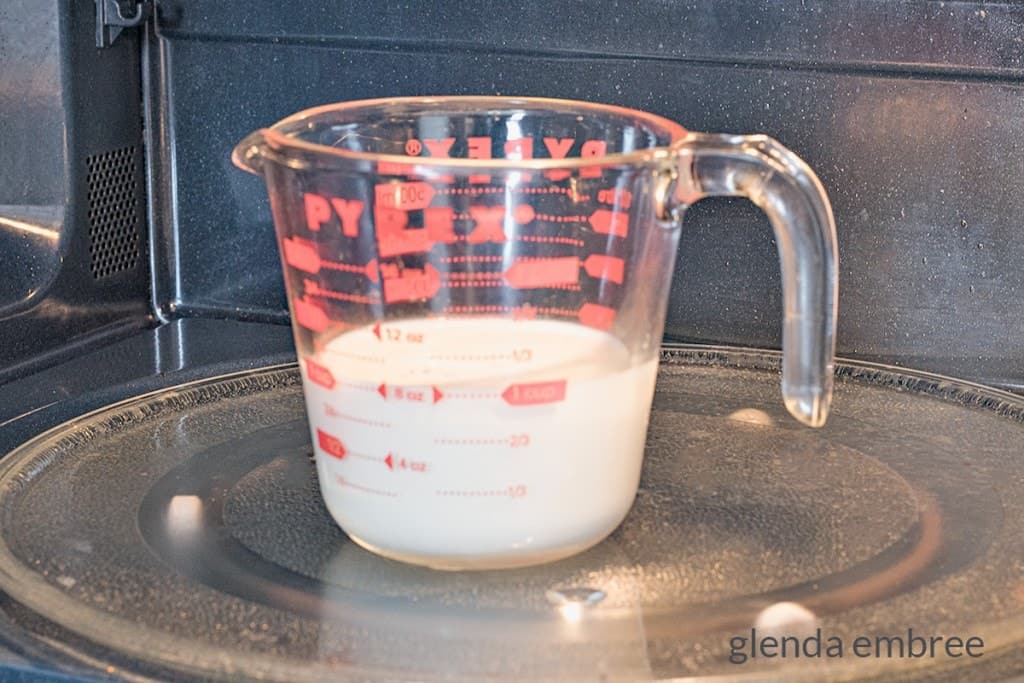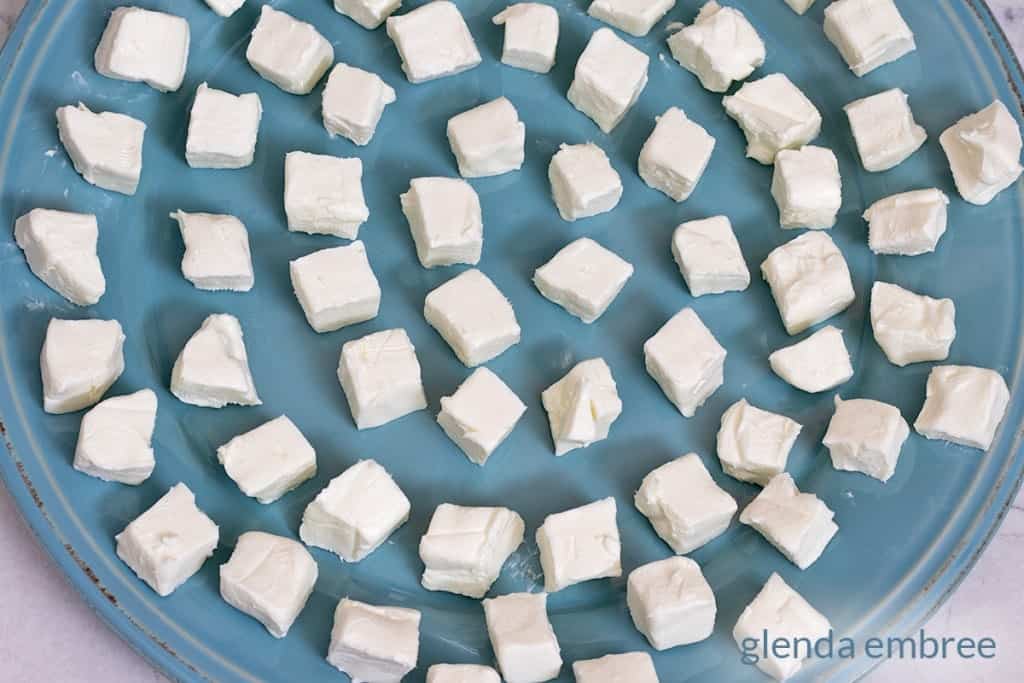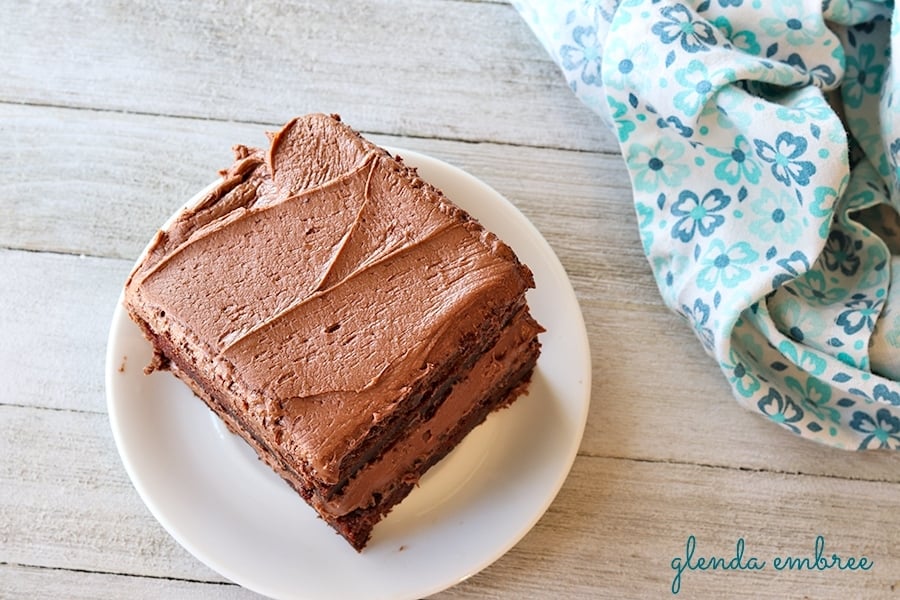To bring dairy and eggs to room temperature can seem like a pointless extra step when you’re ready to bake right this minute. I get it. I’ve felt all the same things.

I almost always have butter at room temperature, but milk and eggs, not so much. I used to think it didn’t really matter. However, I’ve learned there are some valid reasons to take the time to bring ingredients to room temperature before baking. And if the author of a recipe says use room temperature ingredients, you’ll need to do that to have the same finished product that they achieved.
As a rule of thumb, unless a recipe says to use cold butter, (like for biscuits, scones or pie crust), I always default to room temp ingredients, even if the recipe doesn’t specify.
Friend, none of us want to waste time or money for ingredients and end up with a less than perfect and delicious dessert or finished baked good. Using room temperature ingredients is as important to that outcome as properly measuring flour. I’ll show you all you need to know.
Why Bother?




Eggs: Eggs are sort of like the glue, the binder, that holds baked goods together. They give your finished product structure and stability. Eggs affect the final texture of your cakes, cookies and other baked treats.
At room temperature they will blend in and emulsify with other fats in your recipe more easily. As they emulsify they trap air, which makes it easier for batters to rise and creates a light and fluffy texture in your finished baked goods.
Conversely, cold eggs have a harder time emulsifying with other fats. Their use in your baked goods can lead to lumpy batters, a dense and heavy texture in your finished baked goods, poor rising and needing longer baking times than baking with room temperature ingredients.
Butter: Just like eggs, the goal is to emulsify all the fats in your recipe, trapping air in your batter as you do. Butter simply can’t do that if it’s cold. It’s also much more difficult to integrate cold butter into sugar when you are trying to cream them together. In most cases, softening butter before baking is critical to having light, fluffy and tender baked goods that rise properly.
Milk, Cream or Buttermilk: For all the same reasons as noted above, you need dairy liquid to be at room temperature to fully incorporate them with the other fats in your recipes. Structure, stability, texture and rising can all be affected if you don’t.
Cream Cheese: Cream cheese is just another fat in the recipe. It can definitely affect the texture of your baked goods by not emulsifying well with the other fats. And, we have all experienced lumps of cream cheese that haven’t blended well into the batter. It can’t distribute evenly in your batters, frostings and cheesecakes if it’s cold. Don’t let cold cream cheese leave unincorporated chunks and pieces to spoil your favorite desserts. You can just soften it quickly.
Favorite Tools for Baking
How to Bring Dairy and Eggs to Room Temperature Quickly
These are the instructions for warming individual ingredients. All of them are simple and in the time it takes you to bring eggs to room temperature, you’ll have the milk, butter and even cream cheese ready, too.
It’s easy. You can definitely do it. I’ll show you how.
Bringing Butter to Room Temperature

Ideally, you would remove butter from the fridge a couple of hours before baking begins. But, who hasn’t forgotten? I sure have. And sometimes, I just don’t have an hour or two to wait for it. Room temperature butter will be slightly softened, but still somewhat cool to the touch. You’re shooting for about 65° F.
Cut the amount of butter for your recipe into cubes. Slice the stick lengthwise down the center. Flip the whole stick on its side and slice that side lengthwise down the center. You’ll have 4 long sticks, now. Cut the sticks into cubes and put the cubes into a microwave safe bowl or arrange in a single layer on a microwave safe plate.
Microwave the butter at 20% power in 10 second intervals. You can’t walk away from this one. Every microwave is different, so I can’t give an exact amount of time. Check between each 10 second interval to prevent the butter from melting. Touch it with your finger. Does it leave an imprint? Remember room temperature butter may still be slightly cool to the touch, but gentle pressure will leave an imprint.
Bringing Eggs to Room Temperature

You won’t believe how simple it is to quickly bring eggs to room temperature. Place the eggs for your recipe in a bowl or container that will hold all the eggs and have enough head space for them to be completely covered with water.
Hold the bowl of eggs under the faucet and fill it with warm (not hot) tap water. Temperature is important, here. Hot water can begin to cook the eggs.
Turn on your hot water and hold your hand in the stream. Adjust it to a comfortably warm temperature for your hands. That will be perfect for this job.
Let your eggs sit in the water for 5 to 10 minutes, depending on the temperature of your house and the water you used. The eggs will be lightly warm when they are ready.
Bringing Cream Cheese to Room Temperature

Cut the amount of cream cheese for your recipe into ½‑inch cubes. It doesn’t need to be perfect, but somewhat uniform in size so they will warm at the same rate.
Arrange the cubes in a microwave safe bowl or arrange on a plate.
Microwave the cream cheese at 20% power in 10 second intervals. You can’t walk away from softening cream cheese, either, as it melts just like butter.
Since your microwave may be different from mine, I can’t give an exact amount of time. It usually doesn’t take more than one or two rounds in my microwave, but again, check, check, check. Check between each 10 second interval. Touch it with your finger. It may still be slightly cool to the touch, but softer. Does it give slightly when you press it? If so, you’re done.
Bringing Milk, Cream or Buttermilk to Room Temperature

Milk, Cream and Buttermilk are so easy to quickly bring to room temperature. Place the amount for your recipe in a microwave safe bowl or *measuring cup. [affiliate link] Use 20% power on your microwave and heat your dairy in 15 second intervals until it’s no longer refrigerator cold. I use a clean meat thermometer to check in between rounds for that magical 65° F. (Candy thermometers only go as low as about 140°, so it is not a good option for this task.)
Recipes You’re Gonna Love to Bake!
I’m right there with you. And, I get feeling all “hmmmph!” about the added steps it will be to bring dairy and eggs to room temperature before baking. But, now you have all the info. You’ve got this!
Plus, delicious treats like these will be a satisfying reward. Have a wonderfully blessed week, my friend! I hope you eat cake! 🙂













Hi Glenda, I just found your site! Love your recipes and your style. Please add me to your email list. Thank you and have a blessed day. Kim
Hi Kim! Thanks so much! I’m thrilled to have you as a reader and have added you to our subscriber list. You can expect your first newsletter this Friday. Have a great week!